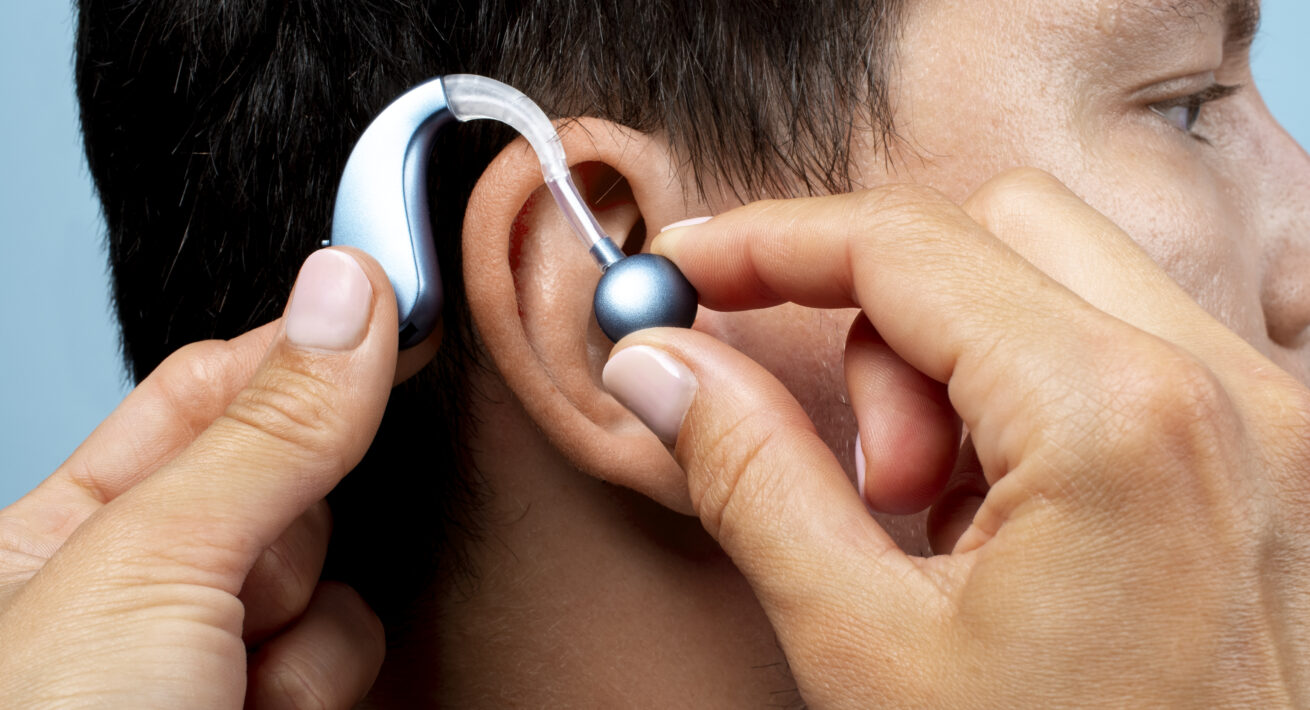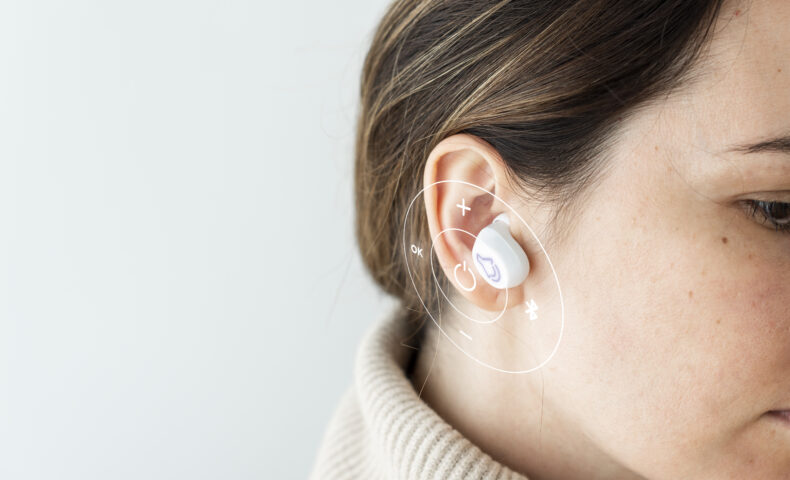With modern technology, it is now possible to take remote measurements for a hearing aid. This means that the days of physical measurements and impressions are over! Hearing care professionals can now recommend the most suitable hearing aids to their clients with a reliable digital solution.
The goal of this article is to present a new way of taking measurements for hearing care professionals by providing them with a system that is both digital and technological.
Why take accurate measurements of the ear when prescribing a hearing aid?
Hearing loss can be an isolating disability, but there are steps that can be taken to improve the quality of life for people with hearing loss or presbycusis, including the use of a hearing aid. A hearing aid is prescribed by an ear, nose, and throat specialist (ENT) or physician who determines the cause of the hearing loss and recommends the hearing aid.
What is a hearing aid?
A hearing aid, also known as a ” audioprosthesis“, is an electronic device which aims to compensate for a hearing loss. It amplifies sound to help people with mild to moderate hearing loss hear better. It can be worn on the outer ear or placed behind the ear. The fitting is performed by a hearing care professional, who is responsible for selecting, designing or fitting the most appropriate hearing aid for the patient.
What are the different types of hearing aids?
In the hearing aid market, four types of hearing aids are prescribed depending on the age and pathology of the patient:
1/ BTEs (Behind The Ear)
A box containing the electronic elements (microphone, earphone and amplifier) is placed behind the ear. It captures and processes the sounds. The amplified sound is then transmitted to the ear through a tube that is inserted into the ear canal.
2/ Micro BTE’s
Based on the same principle as BTE hearing aids, a case is positioned behind the ear, but it does not contain an earpiece. The earphone is placed in the hollow of the ear. One speaks then about micro prosthesis contour of ear with deported ear-phone (RIC).
3/ In-the-ear prostheses
This small, discreet device is hidden in the ear opening. It is generally custom-made to fit the ear perfectly.
4/ Implants
Cochlear implants require surgery to be placed under the skin behind the ear.
Why recommend the right size hearing aid?
The ears are a complex and unique body part, meaning that no two are alike. This makes it very difficult to determine the right equipment size, which has an immediate impact on client satisfaction.
The hearing aid must ensure the following conditions:
- A good fit of the device on the ear so that it does not move or fall off;
- Proper positioning of the device for sound amplification adapted to the patient’s needs;
- Sufficient comfort to avoid discomfort or injury to the patient.
During the hearing examination, the hearing care professional will take measurements of the ear to be fitted. If necessary, he or she will make an impression of the patient’s auricle and ear canal with a mold. Usually, a hardening silicone paste is used to make this impression. However, the latest technological innovations are changing this practice. Let’s see now how to simplify this measurement, how to ensure a modeling of the ear without mold, without touching the patient and with an unequaled reliability of measurement.
How to simplify measurements?
Taking an impression by 3D scan
New digital technologies are putting physical earprint on the back burner. With 3D scanning from a smartphone, you get a perfect model of the ear. 3D scanning captures in minutes the contour of the ear, the curve of the auricle to the lobe, the height of the helix, the entrance to the ear canal to the first elbow…
This revolution improves patient comfort while saving time for health professionals. Indeed, the contactless measurement, via a smartphone, can be performed by anyone. As it is not a medical act, this digital measurement can be performed by a non health professional.
MyFit Solutions has developed a technology that allows the realization of 3D scan from a smartphone. This one is :
- Intuitive and guided with augmented reality.
- Fast, a few minutes are enough!
- Accurate, the 3D models generated with MyFit Solutions have an average accuracy of one millimeter.
- And reproducible, the MyFit Solutions technology is validated in production with a rate of 3D scan right the first time of more than 98%.
Why digitize the measurement?
In the hearing aid market, the benefits of digitization are obvious for both in-office and online professionals. However, there are fundamental differences between France and other countries, both in terms of the approach to healthcare and in terms of the reimbursement systems for hearing equipment.
In France:
The solution helps the practitioner (audioprosthesist) to recommend a size to his client in the office or in the store. Of course, there is still the ruler that can be placed on the patient’s ear. Nevertheless, the contactless measurement allows a modern approach with the following direct benefits
- A digitalization of the customer experience in store.
- Limited contact with the patient.
- An automatic capture of the patient’s ear dimensions to be kept in his file.
Abroad, in ecommerce:
MyFit Solutions technology facilitates the online marketing of hearing aids and prostheses. Indeed, without having access to the patient, equipment manufacturers have already made it possible to adjust the devices remotely to optimize hearing. But how do you take the patient’s measurements to configure the hearing aid? The length of the tube and the diameter of the earmolds must be adapted to the morphology of the wearer’s ear.
Many players are beginning to position themselves on the online market to reduce the cost of access to hearing aids:
- A decrease in return rates/costs:
- The creation of an online digital experience;
- An increase in customer satisfaction;
- An innovative brand image!
In both cases, using a tool such as the MyFit Solutions technology available via a mobile application, is to enjoy a real added value on its market.
What measures are important when choosing hearing aids?
The complexity of hearing aids
Modern hearing aids are equipped with sensitive microphones, electronic amplifiers and speakers. They consist of 3 parts:
- The housing that contains the battery, the microphones, and the amplifier;
- The tube or RIC cable (Receiver In the Canal);
- The dome or earmold.
Two measurements are essential to be able to prescribe a hearing aid that is best adapted to the morphology of the patient’s ear:
1/ RIC cable
This is the wire that joins the dome (inner part of the ear) and the case that is placed at the back of the ear. To choose the right size, you need to know the length from the top of the pinna to the top of the tragus.
A poor fit of the cable will result in a bad fit of the hearing aid and a decrease in the performance of the hearing aid. Either it is too small and unpleasant to wear, or it is painful. Or it is too big and in this case, the hearing aid is not stable and moves. In both cases, the bad position also leads to a decrease in the sounds captured by the box and thus to a decrease in the hearing optimization provided to the patient.
2/ The dome
This is the small tip that goes into the canal and is positioned after the first bend in the ear. Not wearing the right size of dome causes discomfort, pain and may cause a malfunction of the equipment. Indeed, a dome that is too large can cause pain, especially with daily use. And if it is too small, it can impinge on the efficiency of the sound amplification of the prosthesis.
How does MyFit Solutions take remote measurements for a hearing aid?
MyFit Solutions created a neural network to create the digitization of measurements needed to recommend hearing aids. The neural network was trained on a large panel of potential patients of different genders, sizes and ethnicities! This results in a 98% successful scan rate in a single scan.

To scan an ear with a smartphone and collect up to 75 points, all you need to do is install a dedicated app. The scan takes a few seconds. Then, artificial intelligence (AI) establishes the annotation of points on the scanned ear. All digital measurements are created and directly provided via our mobile application at the end of the experience! The processed data allows to reproduce a 3D model at the scale of the ear: shape, dimensions and characteristics.
The patented MyFit Solutions technology combines artificial intelligence and augmented reality to make the job of the hearing care professional easier. This allows them to take remote measurements of their patients’ ears and recommend the right hearing aid while providing an innovative experience. Hearing care professionals, would you like to know more about our solutions for remote measurement? C



